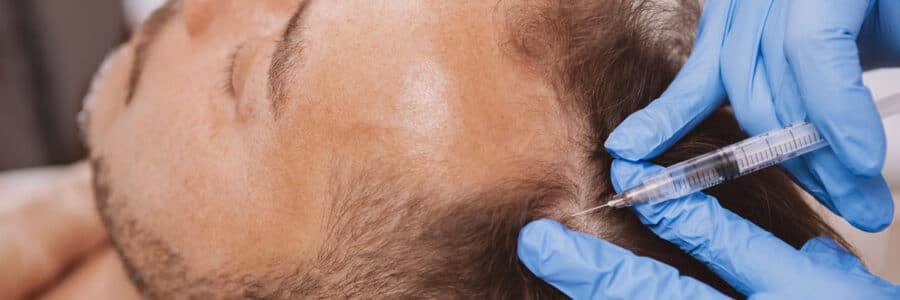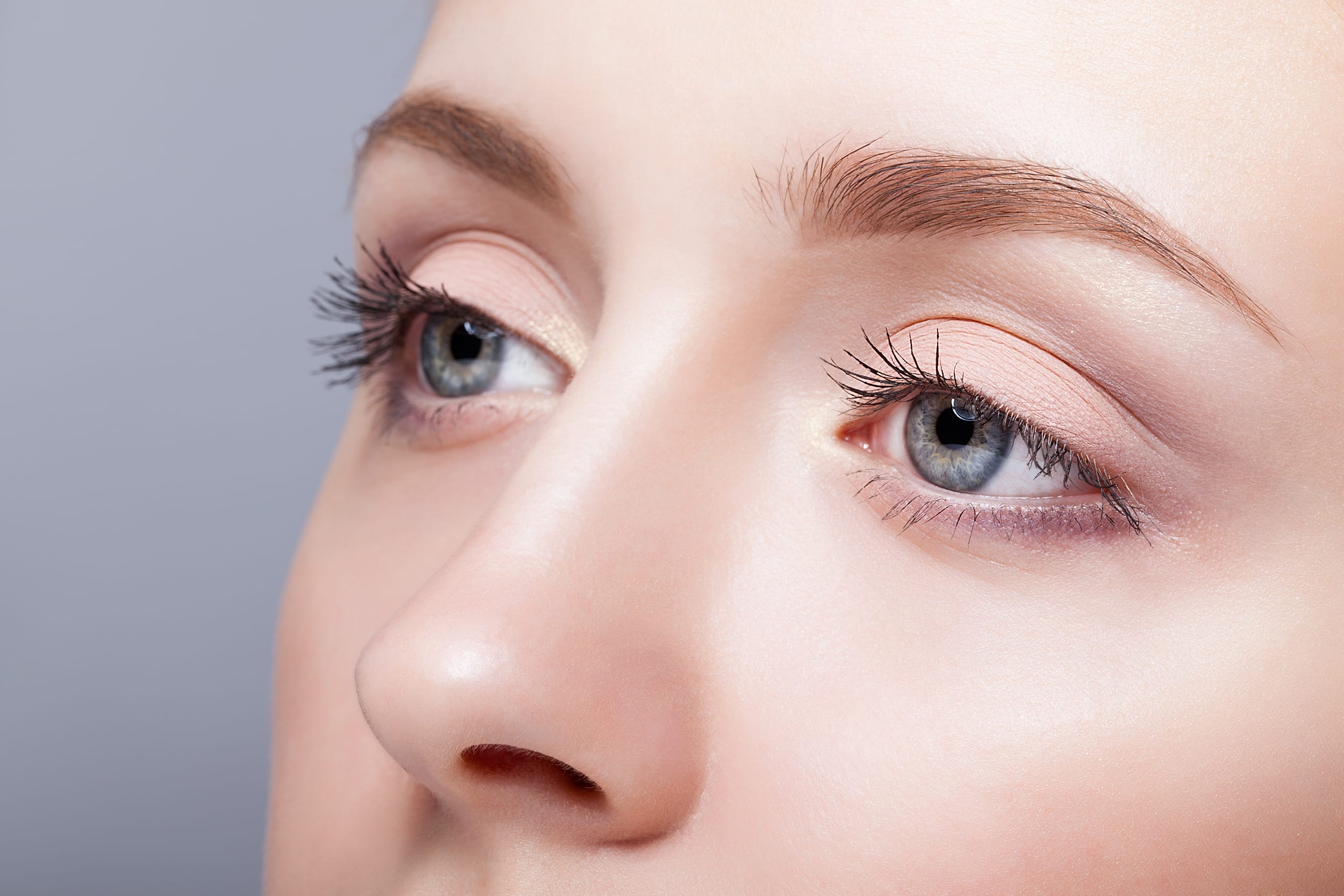Full, thick hair is currently the ideal of beauty. For many people, however, this is not achievable in a natural way, as hair loss is common – especially in old age and through stress. However, there are several methods in aesthetic medicine that declare war on hair loss and thinning. In the following text you will learn everything about hair thickening and hair transplantation.
When is hair thickening or hair transplant used in men?
Hair thickening or hair transplant is used for people who suffer from thinning hair or severe hair loss. This is a loss of more than 100 hairs per day. A certain amount of hair loss is normal and should be differentiated from pathological hair loss, also known as effluvium.
Both men and women can be affected by hair loss and wish for a thickening of the scalp hair. This is most common with the so-called androgenetic effluvium, which can occur in almost 70 percent of all men and up to 50 percent of women in old age. The reason for this are the androgens, i.e. male sex hormones. But hereditary predisposition, which makes the hair follicles more sensitive to these same hormones, also plays a role in androgenetic hair loss. Early androgenetic hair loss in particular can be effectively treated with hair transplants or hair thickening. In addition to this form of hair loss, there are others that are associated with autoimmune diseases or deficiency symptoms, among other things. Hair thickening or hair transplants are usually not useful.
As a man, what do I have to consider before a hair thickening or hair transplant?
Before hair thickening or transplantation, Dr. Matiasek will hold a detailed consultation with you. He will go into detail about your wishes and ideas and discuss with you the best option for your individual hair situation. Depending on the pattern of hair loss, age and the patient’s wishes, either a hair transplant or hair thickening using the PRP method is recommended.
One week before a hair transplant, it is important to refrain from alcohol and nicotine and, if necessary, from blood-thinning medication. You should also know that the hair at the point of removal has to be shaved and that this will result in bald spots on the back of the head, which, however, will not be visible for long after the hair transplant. Before hair thickening with PRP, it may also be necessary to discontinue blood-thinning or pain-relieving medication, as these impair the function of the blood platelets. You will be informed in advance about all the necessary precautionary measures and what you should consider in your individual case.

How does hair thickening work in men?
First, Dr. Matiasek marks the areas to be treated with a marker. Then, the anesthesia takes place, which usually consists of a general anesthetic. Sedation may also be sufficient, whereby the choice of anesthesia is already made during the consultation. The procedure itself takes about one to four hours and takes place either in the day clinic or as an inpatient with an overnight check-up. There are several different techniques for performing liposuction, and Dr. Matiasek prefers to use vibration-assisted liposuction, as it can be used to achieve particularly sustainable results.
In vibration-assisted liposuction in combination with the tumescence method (VAL), Dr. Matiasek first injects a liquid mixture of sterile saline solution, adrenaline and a local anesthetic into the adipose tissue. Special vibration cannulas ensure that the fat cells burst faster. After about 45 minutes, the fatty tissue loosens and can easily be suctioned off with the finest cannulas. The vibration creates heat, which in turn has a tightening effect. Surrounding nerves and vessels are spared during this procedure. The advantage of this method is that the skin at the entry points of the cannulas does not have to be nourished and thus heals more quickly.
At the end of each treatment, the incision sites are taped shut and special compression garments are put on to protect the treated areas. In addition, the protection ensures that there are no irregularities or dents and that the result is therefore satisfactory.
What are the risks and complications of liposuction for men?
As with any surgery, complications can arise with liposuction. Impairments during or after the procedure can be swelling, bruising, secondary bleeding, hardened tissue, embolism, thrombosis, circulatory problems, wound healing disorders or infections. However, these symptoms occur very rarely. In addition, for various reasons, the result can be unsatisfactory with asymmetries or dents. Most complications go away on their own after two to three weeks. If you have any complaints or questions, you can contact Dr. Contact Matiasek at any time.
As a man, what should I watch out for after liposuction?
You will be informed in advance of a liposuction what the time after the treatment will be like and what measures you should take to contribute to the best possible long-term result. In the first six weeks after the procedure, you should wear special compression garments so that the subcutaneous fatty tissue can contract and there are no sagging skin areas. For about four to eight weeks, patients should avoid sunbathing, saunas and hot baths, as well as anti-coagulant and blood-thinning medication. Those affected should also only resume exercise after about four to six weeks. The healing and the slowed lymph flow can be promoted by means of lymph drainage. Most men can go back to their usual everyday life and work after a few days. To prevent wound healing disorders, you should avoid alcohol and nicotine for at least four weeks. To support you, Dr. Matiasek monitors the healing process in regular follow-up check-ups.
When are the results of liposuction visible in men?
A topic that patients are naturally keenly interested in is when the results of liposuction will be visible. Since swelling occurs after the procedure, the first changes can only be seen after about two weeks. The final result usually appears after about six months. Only then does the treated tissue take on its new shape and the swelling associated with the procedure has completely subsided. The fat cells removed during the operation can no longer be reproduced, but the remaining fat cells can fill up and enlarge if you gain weight again. In order to prevent this, you should therefore pay attention to a healthy diet and sufficient physical activity.
If you are interested in hair thickening or hair transplantation or if you would like further information about these treatments, Dr. Matiasek would be happy to invite you to his practice for a consultation.






